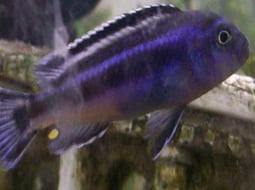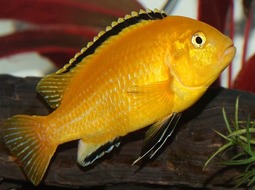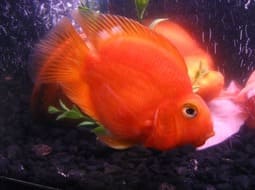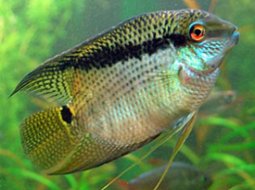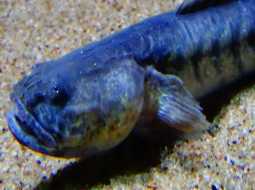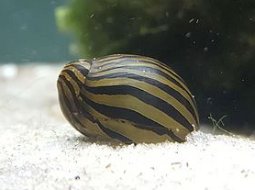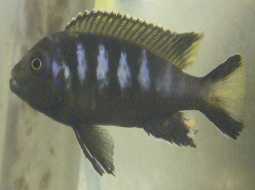
Loading Aqualapp ...
Care and Compatibility of Bumblebee Cichlid - Pseudotropheus crabro
Introduction
Pseudotropheus crabro, also known as Bumblebee Cichlid, is a cichlid species native to Lake Malawi in Africa. It has a robust body and distinctive coloration that resembles the stripes of a bumblebee, with yellow and black patterns. Males are usually larger and more colorful than females. They are territorial and aggressive fish, so it is recommended to keep them in aquariums with sufficient space and hiding places. They primarily feed on algae and plant matter, although they can also accept commercial foods in the form of pellets and flakes. Reproduction occurs through mouthbrooding, where the female guards the eggs and fry in her mouth until they hatch.
Behavior
Pseudotropheus crabro is a territorial and aggressive cichlid, especially during the breeding season. It is recommended to keep them in aquariums of adequate size to provide enough swimming space and territory establishment. They are active swimmers and fast movers. Providing hiding places and structures in the aquarium creates refuge areas and helps reduce aggression between them and other fish. Maintaining good water quality and performing regular water changes are also important for their well-being.
Sexual Dimorphism
Sexual dimorphism in Pseudotropheus crabro is evident. Males have more intense colors and often exhibit a distinctive stripe pattern, while females tend to be duller in color. During the breeding season, males may exhibit more pronounced territorial behavior.
Reproduction
Reproduction in Pseudotropheus crabro is oviparous. During courtship, males display their brightest colors and perform courtship movements to attract females. Once the female deposits the eggs, the male fertilizes them, and the female picks them up in her mouth. The mouthbrooding incubation lasts until the eggs hatch, during which the female cares for and protects the fry in her mouth. After hatching, the female releases the fry, and they become free-swimming. Providing hiding places and structures in the aquarium is recommended to protect the fry from potential aggression and harassment.
Aquarium Conditions
Pseudotropheus crabro is an African mbuna cichlid that requires an aquarium with rocks, hiding spots, and open swimming areas. It prefers alkaline water and warm temperature. Aquarium décor should include stacked rocks and sand to recreate its natural habitat in Lake Malawi. Maintaining water quality is important and providing a varied diet.
Feeding
Pseudotropheus crabro is primarily herbivorous and feeds on algae and plant matter found in its natural environment. In the aquarium, it is recommended to provide a balanced diet that includes plant-based foods such as algae flakes and pellets, as well as fresh and frozen vegetables. They can also accept live foods such as daphnia and enriched brine shrimp. It is important to avoid overfeeding to prevent health issues and maintain water quality.
Complexity
Caring for Pseudotropheus crabro can be moderately challenging. They are territorial fish and can be aggressive towards other fish, especially during breeding and territory defense. It's recommended to keep them in groups with other mbuna species and provide enough hiding spots to reduce aggression. They require a balanced diet and regular aquarium maintenance.
In case you need more help, or if you want to know into any topic related to the Pseudotropheus crabro (Bumblebee Cichlid) and even any other species you can use the forums to ask what you need.
To do an analysis more detailed about coexistence and behavior of Pseudotropheus crabro (Bumblebee Cichlid) use the Aquarium simulation tool, if you do this you can test different ways to combine the Bumblebee Cichlid with other fishes giving the dimensions and space on you aquarium, on this way you can known the optimal configuration for keep the fishes that you want.
You can also find out the 20 species compatible with the Pseudotropheus crabro (Bumblebee Cichlid) can live together.
Note: The parameters of the water such as PH and temperature are also used to calculate the compatibility of the species.
Compatible species (20)
Compatible (4 Species)
Compatible without any restriction
With Reservation (12 Species)
Estos peces son ciclidos africanos del lago Malawi agresivos, por lo general pueden convivir con otros Mbunas agresivos si cuentan con espacio suficiente en el acuario, rocas y escondites donde puedan refugiarse de ser necesario.
Compatible in some cases, it depends on the nature and personality of the fish.
Showdown over territory (2 Species)
Fish can live together as long as the space is spacious enough to delimit a territory, otherwise there may be aggressions for competing for the territory.
Como a estos peces les gusta estar refugiados en diferentes ubicaciones del acuario ya sean en plantas, troncos, rocas etc, si otro pez intenta entrar donde está escondido podrían haber confrontaciones por ese refugio.
Considerable size difference (1 Species)
They can coexist while they are similar in size or the size difference is not very abysmal, since as the fish grows it increases the chances of eating its partner that did not grow much.
Compatible if space is enough (1 Species)
They can coexist together if the aquarium they share is large and spacious enough for both species to feel good, as some fish may attack others to feel that they have little space and try to eliminate the competition.
Bumblebee Cichlid
Pseudotropheus crabro
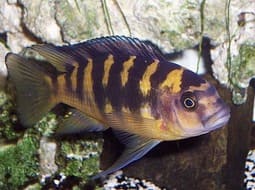
- Ph: 7.8 - 8.6
- Temperature (c°): 25 - 27
- Measures: 12 cm
- Aquarium Capacity:
60 Liters - 16 Gallons - Alimentación: Herbivores, Omnivores
- Colores: Black, Yellow
- Comportamiento: Likes to take refuge, Semi Aggressive, Territorial
- Habitad: African
- Preferencias del Acuario: Natural plants, Rocks
- Tamaño: Medium
- Taxonomía: Cichlids, Fish, Mbunas
- Tipo de Agua: Sweet water, Tropical waters
- Velocidad de nado o movimiento: Normal
- Zona de Nado: Swim in the middle of the aquarium

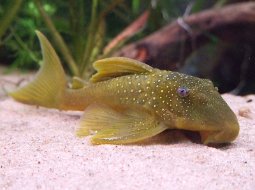
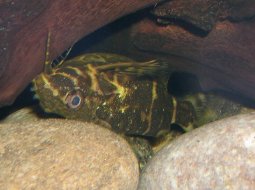
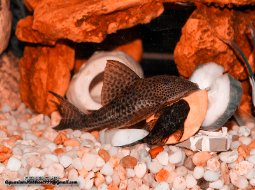
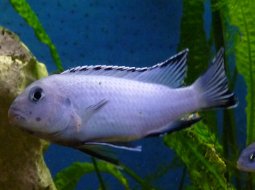

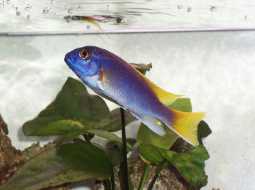
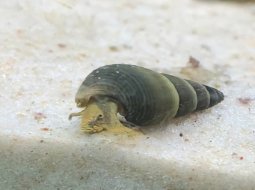


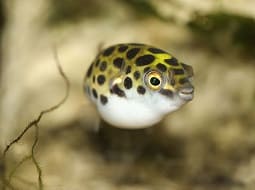
.jpg)
